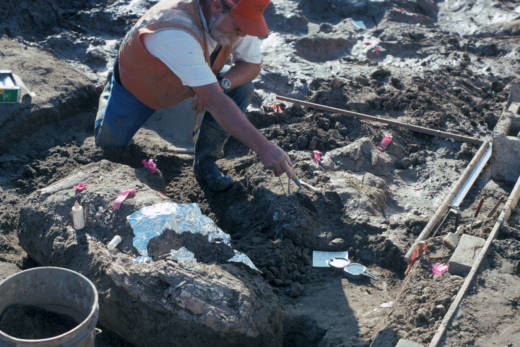Ancient mastodon fossils found during road repairs in San Diego have scientists considering a stunning possibility: that North America was home to ancient human ancestors far earlier -- by more than 100 millennia -- than most scientists currently believe.
Archaeologists from the San Diego Natural History Museum and the South Dakota-based Center for American Paleolithic Research presented their analysis in a study published last week in the journal Nature.
The fossils, originally discovered by archaeologists in 1992, were of teeth, tusks and bones of a mastodon (Mammut americanum), an extinct relative of elephants. No hominid remains were found at the site, which was likely an old riverbed made of mostly silt and sand (human remains rarely preserve well, especially for very old sites). But what's got scientists interested in this study is that the fossils were found alongside rocks that appeared too large to be carried by a stream -- and the fossils show breakage and wearing that could have been caused by early humans.
"It's the technological evidence that we have. The breakage patterns on the mastodon limb bones is very distinctive," said Steven Holen, primary author of the study.
Early humans broke up large animal bones in order to eat bone marrow or to create fine tools from thin fractured bone pieces.
